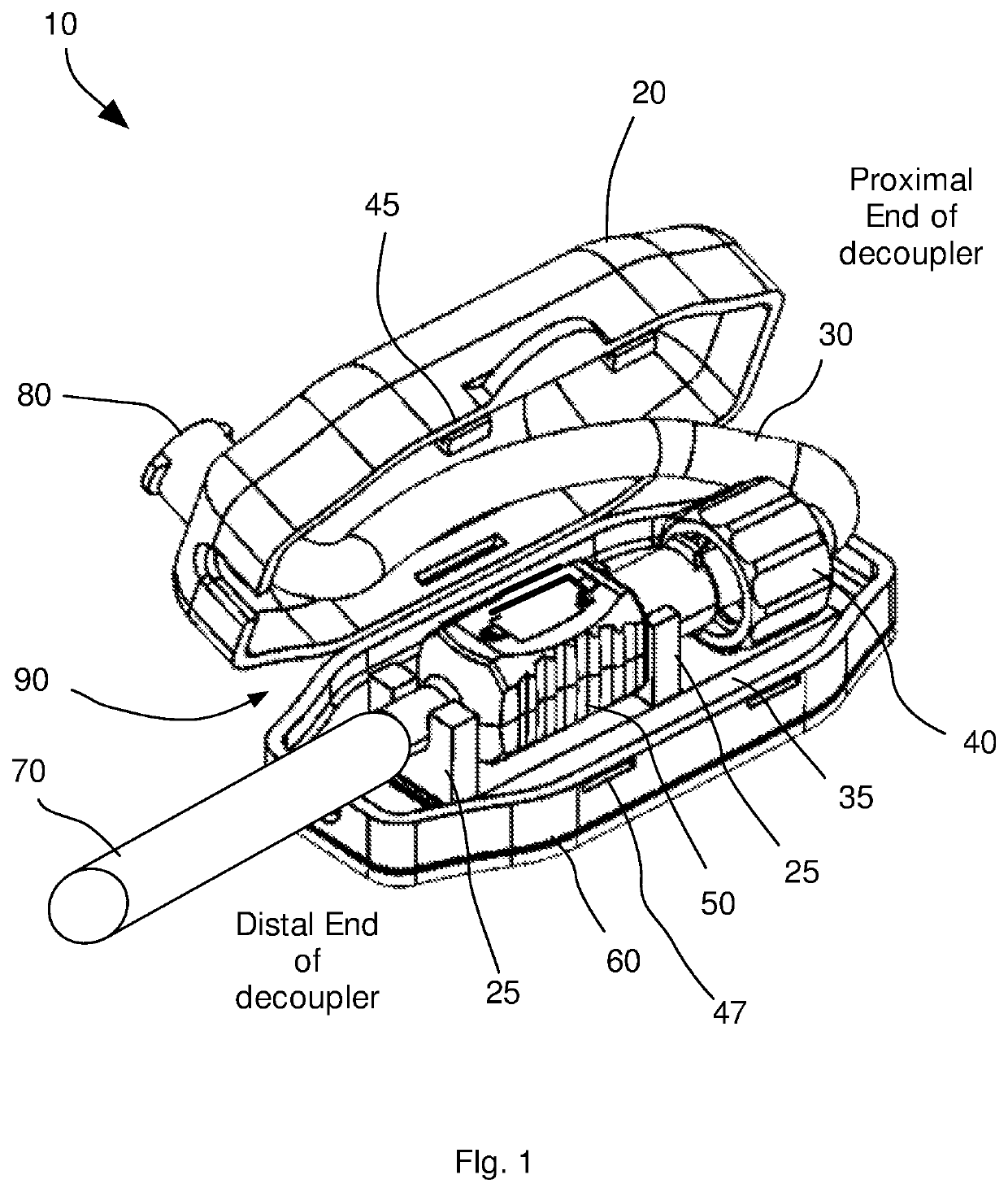Catheter decoupling device
a catheter and decoupling technology, applied in the field of catheter decoupling devices, can solve the problems of ineffective nerve block, tissue tear and/or distal end migration, and inability to effectively relieve pain, so as to reduce the risk of stressing the anchor site at either end or eliminate the effect of stressing the risk
- Summary
- Abstract
- Description
- Claims
- Application Information
AI Technical Summary
Benefits of technology
Problems solved by technology
Method used
Image
Examples
Embodiment Construction
THEREOF
[0036]FIG. 1 illustrates one configuration of the decoupler, 10. This decoupler may be placed proximal to the exit location of an embedded catheter, between the catheter and the utlity tubing or other delivery devices. In this configuration, the catheter 70 may be coupled to a catheter hub 50. The catheter hub 50 may be placed within a sled 25; the distal and the proximal ends of the sled are visible in the figure and are both enumerated as 25. The sled may be positioned on a track 35 such that the sled may have some freedom of movement generally between the proximal end and the distal end of the decoupler. The track may be also so designed that some freedom of motion may be allowed side to side. In some versions, the tracks may be further designed to allow some up and down motion a well. As will be evident as more of the decoupler is described, this freedom of motion imparted to the sled is one component of the design of the decoupler that prevents, minimizes or eliminates m...
PUM
 Login to View More
Login to View More Abstract
Description
Claims
Application Information
 Login to View More
Login to View More - R&D
- Intellectual Property
- Life Sciences
- Materials
- Tech Scout
- Unparalleled Data Quality
- Higher Quality Content
- 60% Fewer Hallucinations
Browse by: Latest US Patents, China's latest patents, Technical Efficacy Thesaurus, Application Domain, Technology Topic, Popular Technical Reports.
© 2025 PatSnap. All rights reserved.Legal|Privacy policy|Modern Slavery Act Transparency Statement|Sitemap|About US| Contact US: help@patsnap.com



